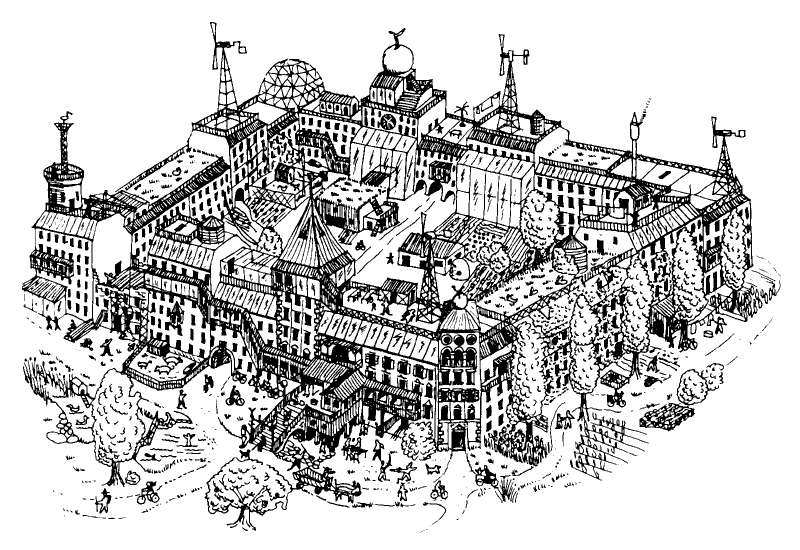
P.M. (author)
Encyclopedia
The pseudonym P.M. is used by an otherwise anonymous Swiss author (born 1946), best known for his 1983 anarchist / anti-capitalist social utopia
n book bolo'bolo, published with the paranoia city verlag of Zürich
.


(a few hundred individuals). This would be the basic social unit in an envisioned utopian-ecological future; its name is an example of a word from the constructed language
(or rather, a basic vocabulary of about thirty words) called asa'pili
.
Utopia
Utopia is an ideal community or society possessing a perfect socio-politico-legal system. The word was imported from Greek by Sir Thomas More for his 1516 book Utopia, describing a fictional island in the Atlantic Ocean. The term has been used to describe both intentional communities that attempt...
n book bolo'bolo, published with the paranoia city verlag of Zürich
Zürich
Zurich is the largest city in Switzerland and the capital of the canton of Zurich. It is located in central Switzerland at the northwestern tip of Lake Zurich...
.


bolo'bolo
The title of this book refers to the bolo, or an autonomous community corresponding to the anthropological unit of a tribeTribe
A tribe, viewed historically or developmentally, consists of a social group existing before the development of, or outside of, states.Many anthropologists use the term tribal society to refer to societies organized largely on the basis of kinship, especially corporate descent groups .Some theorists...
(a few hundred individuals). This would be the basic social unit in an envisioned utopian-ecological future; its name is an example of a word from the constructed language
Constructed language
A planned or constructed language—known colloquially as a conlang—is a language whose phonology, grammar, and/or vocabulary has been consciously devised by an individual or group, instead of having evolved naturally...
(or rather, a basic vocabulary of about thirty words) called asa'pili
Asa'pili
Asa'pili is a constructed language created by the pseudonymous author P.M. in his book Bolo'bolo. On the one hand, it is an artistic language, intended to explain his concepts for a sustainable future in an original way. On the other hand, it is a neutral auxiliary language intended for use in the...
.

